Dr. Gillespie's New Assistant

Brief Synopsis
Cast & Crew
Willis Goldbeck
Lionel Barrymore
Van Johnson
Susan Peters
Richard Quine
Keye Luke
Film Details
Technical Specs

Synopsis
Blair General Hospital's Dr. Leonard Gillespie has been working so hard that his friends, chief administrator Dr. Walter Carew and head nurse Molly Byrd, are concerned. When the wheelchair-bound Gillespie falls asleep on a hospitalized patient, they demand that he finally select a new assistant. Gillespie agrees to make his choice by asking a very difficult question of all the new interns; the one who answers it correctly will have the position. Three doctors surprise Gillespie by answering the question correctly: Dr. Randall "Red" Adams of Kansas City, Dr. Lee Wong How of Brooklyn and Dr. Dennis Lindsay, an Australian on temporary assignment at Blair to study tropical diseases. Because he cannot decide among them, Gillespie resolves to give all three a chance. Meanwhile, Howard Allwin Young, the son of one of Gillespie's oldest friends, stop for lunch at an inn with his new bride, dress designer Claire Merton. At almost the same moment that Gillespie calls them to offer his congratulations, Claire suddenly loses all memory of who she is. Gillespie suggests that Howard bring Claire to the hospital, where he and Red try to determine what has caused her amnesia. Though she has no apparent signs of physical or emotional trauma, she can give no information about her life and is reluctant to go home with Howard. Instead, she suggests that they annul the marriage. Red takes her to her apartment and has no success in jogging her memory. When Red discusses the case with his mentor, Gillespie guides him to the only logical conclusion--Clair is faking. To find out what Clair is trying to hide, Red decides to see if he can find her personal physician. Red finally locates the doctor, who has enlisted in the Army. The doctor's receptionist, Mrs. Black, will only let Red see Claire's information card, but Red discovers that Claire had listed herself as a married woman with a two-year-old child. When Gillespie confronts Claire with the information, she collapses, but later confesses that she was married in Texas at age sixteen and was soon widowed by her criminal husband, who left her with a baby. After leaving the baby with her mother, Claire became a successful fashion designer in New York and fell in love with Howard. The reason why she feigned amnesia was that during lunch at the inn, she had tried to tell him about her earlier marriage, but Howard, thinking that she was teasing, made a cruel joke about "second-hand wives." She is convinced that Howard would never understand or accept her child, so she decides to go back to Texas and asks Gillespie and Red not to tell Howard anything. Red and Gillespie are sure that Claire is still hiding something, so Red decides to try to get more information out of Mrs. Black. The next day, after getting Mrs. Black drunk and stealing Claire's file, Red reveals to Gillespie that the file confirmed that Claire was unable to have any more children, but did not know. Gillespie then calls Howard and lectures him about bigotry and prejudice after telling him about Claire's past. After Howard says that he loves Claire and wants both her and her child, Gillespie opens the door to another office and Claire, who has been waiting, is happily reunited with Howard. While Red has been working on Claire's case, Lee and Lindsay have resolved their own and Gillespie says that he cannot fire any of them. Lindsay has been ordered back to Australia, but Lee and Red will both act as Gillespie's assistants.

Director
Willis Goldbeck
Cast
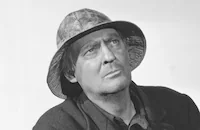
Lionel Barrymore

Van Johnson

Susan Peters

Richard Quine

Keye Luke
Alma Kruger
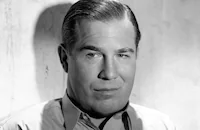
Nat Pendleton

Horace Mcnally
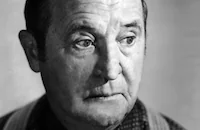
Frank Orth

Walter Kingsford
Nell Craig
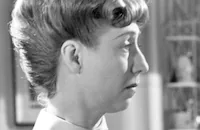
Marie Blake
George H. Reed

Ann Richards

Rose Hobart
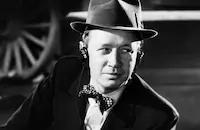
Eddie Acuff
Shirley Warde
Harry Strang
Leigh Sterling

Wally Cassell
Hal K. Dawson
Paul Mcvey
Dorothy Vaughn
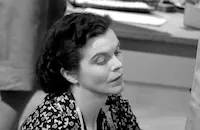
Dorothy Adams

Arthur Shields
Georgia Caine

Jacqueline White
Dick Simmons
Edith Evanson
Pamela Blake
Sarah Padden

Paul Fix

Dorothy Morris

Betty Jaynes
Sylvia Field
Estelle Etterre
Ernie Alexander
Crew
Daniele Amfitheatrof
Lawrence P. Bachmann
Edward G. Boyle
Dr. H. A. Conway
George Folsey
Cedric Gibbons
Willis Goldbeck
Albert Kelley
Urie Mccleary
Harry Ruskin
Douglas Shearer
Art Smith
Edwin B. Willis
Ralph Winters

Film Details
Technical Specs

Articles
Dr. Gillespie's New Assistant

Dr. Gillespie's New Assistant
TCM Remembers Van Johnson - Important Schedule Change on TCM In Honor To Salute VAN JOHNSON
The new schedule for the evening of Tuesday, December 23rd will be:
8:00 PM In the Good Old Summertime
9:45 PM A Guy Named Joe
12:30 AM Thirty Seconds Over Tokyo
2:30 AM The Last Time I Saw Paris
4:30 AM Thrill of a Romance
Van Johnson (1916-2008)
Van Johnson, the boyish leading man whose clean cut, All-American appeal made him a top box-office draw for MGM during World War II, died on December 12 in Nyack, New York of natural causes. He was 92.
He was born Charles Van Dell Johnson on August 25, 1916, in Newport, Rhode Island. By his own account, his early childhood wasn't a stable one. His mother abandoned him when he was just three and his Swedish-born father offered little consolation or nurturing while he was growing up. Not surprisingly, Johnson found solace in singing and dancing lessons, and throughout his adolescence, he longed for a life in show business. After graduating high school in 1934, he relocated to New York City and was soon performing as a chorus boy on Broadway in shows such as New Faces of 1936 and eventually as an understudy in Rodgers and Hart's musical, Too Many Girls in 1939.
Johnson eventually made his way to Hollywood and landed an unbilled debut in the film version of Too Many Girls (1940). By 1941, he signed a brief contract with Warner Bros., but it only earned him a lead in a "B" programmer Murder in the Big House (1941); his contract soon expired and he was dropped by the studio. Johnson was on his way back to New York, but as luck would have it - in the truest Hollywood sense - friends Lucille Ball and Desi Arnaz introduced him to Billy Grady, a lead talent scout at MGM, which was currently Ball's new studio. Johnson was signed up and almost immediately MGM had a star on its hands.
It might have been slow going at first, with Johnson playing able support in films such as Dr. Gillespie's New Assistant and The War Against Mrs. Hadley (both 1942). By 1943 the studio capitalized on his broad smile and freckles and starred him in two of the studio's biggest hits: A Guy Named Joe and The Human Comedy. Those two films transformed him into a boxoffice draw with a huge following, particularly among teenage girls. A near fatal car accident that same year only accentuated the loyalty of his fans, and his 4-F status as the result of that accident created an opportunity for him when so many other leading actors of the era (James Stewart, Clark Gable) were off to war. Johnson was quickly promoted as MGM'sleading man in war heroics and sweet romancers on the big screen: The White Cliffs of Dover, Thirty Seconds Over Tokyo (both 1944), Thrill of a Romance, the episodic Week-End at the Waldorf (both 1945), and a musical remake of Libeled Lady entitled Easy to Wed (1946).
Hits though these were, it wasn't until after the war that Johnson began to receive more dramatic parts and better material such as supporting Katharine Hepburn and Spencer Tracy in the political farce State of the Union (1948). other significant roles included the well-modulated noir thriller The Scene of the Crime, the grim war spectacle Battleground (both 1949), the moving domestic drama Invitation (1952) in which he played a man who is paid to marry a woman (Dorothy McGuire) by her father. Before he left MGM, he closed his career out in fine form with the sweeping musical Brigadoon, co-starring Gene Kelly and Cyd Charisse; and the lilting soaper The Last Time I Saw Paris (both 1954) with Elizabeth Taylor.
After he left MGM, the parts that came Johnson's way weren't as varied, but he had his moments in The Caine Mutiny (1954), the beguiling romance drama Miracle in the Rain (1956) with Jane Wyman; and his lead performance in one of the first successful made for-TV-movies The Pied Piper of Hamelin (1957). By the '60s, Johnson returned to the stage, and played the title role in London's West End production of The Music Man. He then returned to Broadway in the drama Come on Strong. He still had a few good supporting parts, most notably as Debbie Reynolds' suitor in Norman Lear's scathing satire on marital differences Divorce American Style (1967); and television welcomed his presence on many popular shows in the '70s and '80s such as Maude, Fantasy Island, The Love Boat and of course Murder She Wrote. There was one last graceful cameo in Woody Allen's The Purple Rose of Cairo (1985), yet for the most remainder of his career, Johnson worked mainly on the dinner theater circuit before retiring from showbiz completely by the mid-90s. He is survived by a daughter, Schuyler.
by Michael T. Toole
TCM Remembers Van Johnson - Important Schedule Change on TCM In Honor To Salute VAN JOHNSON
Quotes
Trivia
Notes
This film marked the directorial debut of Willis Goldbeck, who previously had written the "Dr. Kildare" and "Dr. Gillespie" films. According to news items in Hollywood Reporter, Edna Holland and Edith Evanson were cast in the film, but their appearances have not been confirmed. Although Selmer Jackson is listed in the CBCS as "Dr. Harrison," he was not in the released film; his character is referred to as being away in the Army. A news item in Hollywood Reporter on August 20, 1942 noted that Dr. H. A. Conway was to be the technical advisor on the film, taking over from the usual series advisor, Dr. Charles Mandell, who had recently entered the Army. The extent of Mandell's participation on this film has not been determined.
This was the first of four films in the Dr. Gillespie series in which Van Johnson portrayed "Dr. Red Adams," and Keye Luke portrayed "Dr. Lee Wong How." Johnson left the series in 1944 and Luke's final picture in the series was the last, Dark Delusion in 1947. Johnson and Luke assumed the role of Gillespie's "assistant," which had previously been occupied by Lew Ayres in films that were part of the Dr. Kildare series. Luke also portrayed Dr. How in the 1944 picture Andy Hardy's Blonde Trouble. For additional information on the "Dr. Kildare" and "Dr. Gillespie" series, consult the Series Index and see the entry above for Calling Dr. Gillespie, and the entry for Young Dr. Kildare in AFI Catalog of Feature Films, 1931-40; F3.5251.















